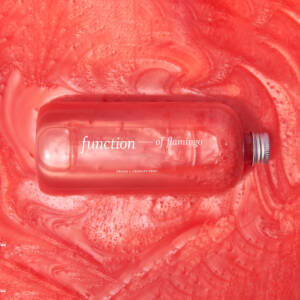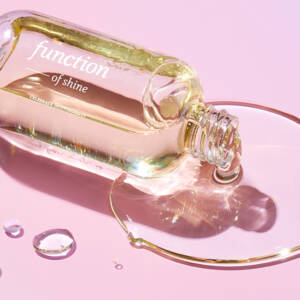Experts say that some amount of hair loss is part of our normal shedding cycle. We know that noticing hair loss beyond the usual amount (that we’re accustomed to on our brushes and near our shower drains) can be alarming and upsetting. There are many reasons why hair loss can happen, and many of them are connected. It can be complicated, so we thought we’d break it down here.
It’s important to remember that you should always consult with your doctor about any health concerns you have. Although we’re experts in hair care, we are not physicians and this is not medical advice.
Let’s start by defining the differences between hair loss and hair breakage. Hair loss refers to hair shedding at the root that doesn’t grow back at the same rate as the loss. Hair breakage refers to hair snapping or breaking off at some point on the strand.
What’s Causing Hair Loss?
Both tangible (those we can see or feel) and invisible factors can cause hair loss. Here are the most common causes:
Tangible:
-Daily traction from hairstyling
-COVID and other inflammatory conditions
-Scalp irritation
-Weight fluctuations
Invisible:
-Natural hair cycles
-Vitamin deficiencies
-Medical conditions such as cancer
-Stress levels
-Hormonal changes
-Pregnancy
What’s Causing Hair Breakage?
There are a few tangible factors that cause hair breakage, such as:
Chemical:
– Repeatedly color-treating or highlighting
– Perms
– Styling/relaxers
Thermal:
-Use of excessive heat (examples include blow drying, flat-ironing, styling tools)
Environmental:
– UV
– Pollution
– Humidity
– Pool/ocean
No matter what is causing hair loss or hair breakage, it’s important to use the right products for your unique hair. The Function of Beauty hair quiz is designed to give you a recommended custom hair regimen tailored to your needs.
Tangible factors of hair loss
Tangible factors are the result of actions that we take, or the results of lifestyle or health changes.
Daily traction from hair styling
Repetitive stress or tension on the hair follicle compromises its ability to produce and sustain long, strong, healthy hair strands. With too much tension, styles like tight ponytails, extensions, LOCS, and tight braids can result in more hair breakage and root hair pull. Wearing such styles for extended periods of time may induce permanent hair loss.
COVID
The COVID-19 virus has been shown to have many impacts on the hair cycle, one of which is hair loss. This can be the result of the infection itself, the body’s stress to the infection, emotional stress or part of the virus’s long-term consequences. It can impact scalp hair, eyebrows, and even eyelashes. Learn more about the relationship between COVID and hair loss here.
Scalp irritation
There are several medical conditions that may cause your scalp to become irritated, and we recommend consulting with a board-certified dermatologist to determine the proper diagnosis and cause. Not all scalp irritation causes hair loss, but it can be a symptom of a medical issue, which may be affecting hair follicle health.
Weight fluctuations
It’s possible to experience hair loss after losing weight. Our bodies are highly sensitive to nutrient deficiencies that may occur with caloric restriction, reduced caloric intake, and the loss of some dietary nutrients, and can cause hair to be damaged. Specifically, a low-protein diet can mean a reduction of amino acids, the building blocks of structural proteins in hair. When protein levels aren’t met, the body prioritizes important protein-dependent functions like tissue repair and digestion, and since hair growth isn’t essential for survival, hair health isn’t prioritized and hair loss can occur.
Invisible factors of hair loss
There are also several Invisible factors that we may not be aware of as they occur, but can impact our hair health.
Natural hair cycles
Have you ever heard of the saying, “our hair changes every 7 years”? It comes from the idea of hair growth cycles. Every strand of our hair is constantly going through one of these stages:
- The growth phase, called ‘anagen’, can last up to 5-6 years. Here, scalp hair can grow about a half an inch per month.
- The transition phase, called ‘catagen’, may occur for 2-3 weeks. This phase signals the end of hair growth.
- The resting phase, called ‘telogen’, may occur for 2-3 months. During this phase, the new hair pushes into the follicle causing the previous hair to be expunged.
- Telogen effluvium is a form of temporary hair loss due to the excessive shedding or resting of telogen hair and occurs several months after a triggering event. Causes may include pregnancy, illness, emotional stress, major surgery, or use of certain prescription drugs like steroids, endocrine issues or other illness.
- After a few months of inactivity, hair follicles return to the anagen phase, and the cycle continues. This is all to say that it’s normal and healthy to experience hair loss (as much as losing 50-100 strands a day) during your hair growth cycle.
Vitamin Deficiencies
Hair is made of keratin and is very sensitive to the level of protein and vitamins that it receives from our diets. Both deficiency and over supplementation of nutrients can lead to hair damage and shedding. Protein and amino acid malnutrition are some areas that can lead to potential hair loss. The potential causes of these deficiencies may include malabsorption disorders, pregnancy, alcoholism, prolonged antibiotic use, vegan/vegetarian diets or malnutrition among others. A dermatologist or doctor can do blood testing to better understand if vitamin deficiencies may be a contributing factor.
Medical Conditions such as Cancer
Hair loss is a common side effect of cancer treatment, from radiation therapy, chemotherapy, or stem cell transplant. These treatments contain powerful drugs that damage the cells responsible for hair growth, which can result in hair loss on the scalp, eyelashes, eyebrows and body.
Stress levels
On average, a healthy human has 10% of his or her hair in the resting phase at any given time, and it is typically shed every few months (when we shower, brush our hair, style it, and even just go about our business). When we are under high stress, the body produces high levels of cortisol to deal with the stress, and therefore produces less of the hormones that support healthy hair growth and nourishment.
Hormonal changes
The hair cycle is impacted by various hormones. Androgens, like testosterone, are found in normal hair follicles and can be a key factor in hair loss. Additionally, thyroid hormones oversee and impact many of our body processes, including those of the skin and hair follicles. When these hormones are imbalanced, the hair follicles can enter the resting (telogen) phase of the cycle, leading to hair loss. Common causes of hormonal changes include puberty, menopause, pregnancy, switching medications, or thyroid disorders.
Pregnancy
Many new moms may experience temporary hair loss, which peaks about 4 months after giving birth. When you’re pregnant, your body changes in response to new hormone levels. One of these changes is an influx of estrogen which changes your hair growth cycles. Excessive hair shedding after giving birth is caused by falling estrogen levels. This is usually referred to as telogen effluvium.
Tangible factors of hair breakage
There are several actions we perform in our hair regimens that can cause breakage.
Coloring your hair
The hair beneath your scalp that hasn’t emerged yet cannot be reached by colors and dyes. So, coloring your hair isn’t a typical cause of permanent loss, but it very commonly causes breakage. First, some hair dyes contain ammonia which swells and causes the opening of hair cuticles to allow dyes to enter. This in turn can cause a change in the hair’s integrity– making the shaft more porous and weak, potentiating breakage.
Use of excessive heat
Daily use of hot styling tools can make hair dry, and prone to breakage. Too much strong, dry heat (like that from regular use of blow dryers, straighteners, and curlers) can weaken hair.
Pollution
Depending on where you live, you’ll be exposed to a certain amount of tiny particles of pollution in the air. One simulated study found that virgin hair exposure to air pollution can cause damage to the hair cuticles (higher wet/dry combing), protein degradation, and a more hydrophilic hair surface.
UV Exposure
Strong UV exposure can damage hair as well as skin. UVB radiation can be responsible for hair protein loss and UVA radiation can cause hair color changes. The effects of UV on hair can lead to hair shaft damage, resulting in dry and brittle hair prone to breakage.
Understanding hair loss and hair shedding is helpful in dealing with it emotionally and physically. Remember: there are so many factors that could be playing a role in what you might be experiencing with extra shedding, and it is normal to experience cyclical shedding throughout your hair cycle. If any of these factors stand out to you as a potential cause of hair loss, it is wise to look into what options you have for reducing risk from those factors, or seek guidance from your doctor or dermatologist. There are two great resources you can use to get started: the American Academy of Dermatology (AAD) includes a list of board-certified dermatologists you can consult with, and the American Hair Research Society (AHRS) is a leading authority on hair loss research and education.
References
https://pubmed.ncbi.nlm.nih.gov/33316115/
https://www.aad.org/public/diseases/hair-loss/causes/covid-19
Houghton V. “The itchy scalp.” Derm World. 2017;27(12):46-52
https://pubmed.ncbi.nlm.nih.gov/24261682/
https://pubmed.ncbi.nlm.nih.gov/20860738/
https://pubmed.ncbi.nlm.nih.gov/29660422/
https://www.ncbi.nlm.nih.gov/books/NBK499948/
https://www.ncbi.nlm.nih.gov/pmc/articles/PMC4606321/
McLaren DS. Skin in protein energy malnutrition. Arch Dermatol. 1987;123(12):1674–1676a. [PubMed] [Google Scholar]
https://www.mdpi.com/2079-9284/5/1/17/htm
https://academic.oup.com/jcem/article/93/11/4381/2627273
https://www.aad.org/public/diseases/hair-loss/insider/new-moms
source: Houghton V. “The itchy scalp.” Derm World. 2017;27(12):46-52.





